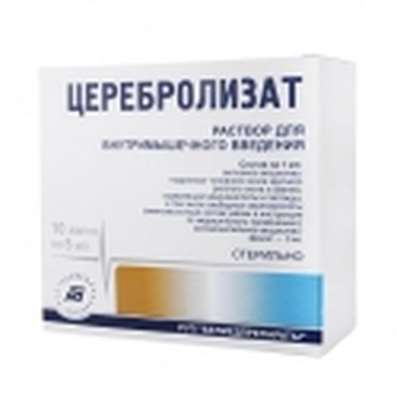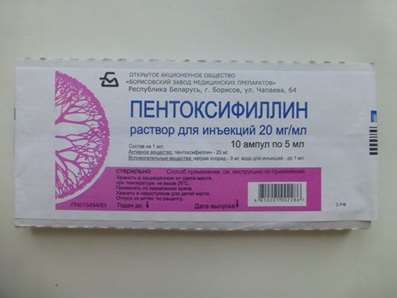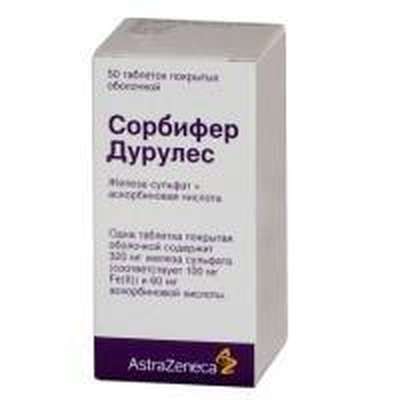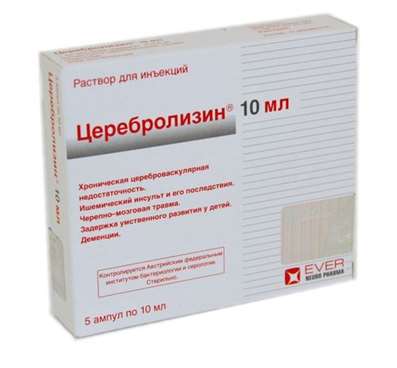Instruction for use: Skin-cap
I want this, give me price
Active substance Pyrithione zinc
ATX code D11AX12 Pyrithione zinc
Pharmacological group
dermotropic means
Nosological classification (ICD-10)
L20 Atopic dermatitis
Itchy atopic eczema, Common neurodermatitis, Allergic skin diseases, Allergic skin diseases of non-infectious etiology, Allergic skin diseases of non-microbial etiology, Allergic skin diseases, Allergic skin lesions, Allergic manifestations on the skin, Allergic dermatitis, Allergic diathesis, Allergic itching dermatosis, Allergic Skin Disease, Allergic skin irritation, Dermatitis allergic, Atopic dermatitis, Dermatosis allergic, Diathesis exudative, Skin Allergic Disease, Skin allergic reaction to medicinal and chemical preparations, Skin reaction to medication, Skin and allergic disease, Acute eczema, Chronic atopic dermatitis, Exudative diathesis, Itching allergic dermatosis
L20.8 Other atopic dermatitis
Constitutional neurodermatitis, Chronic neurodermatitis, Restricted neurodermatitis, Allergic eczema, Atopic eczema, Children's eczema, Diffuse neurodermatitis, Neurodermatitis, Neurodermatitis diffuse, Neurodermatitis limited, Neurodermatitis, Dermatosis of a neurogenic origin
L21 Seborrheic dermatitis
Dermatitis seborrheic, Increased sebum separation, Seborrheic Eczema, Seborrheic dermatitis of the scalp, Seborrheic pyodermatitis, Seborrhea, Eczema seborrheic
L30.9 Dermatitis, unspecified
Allergic dermatoses complicated by a secondary bacterial infection, Anal eczema, Bacterial maturation, Varicose Eczema, Venous dermatitis, Inflammation of the skin, Inflammation of the skin upon contact with plants, Inflammatory Skin Diseases, Inflammatory skin reactions, Inflammatory processes of the skin, Hypostatic dermatitis, Fungal Eczema, Fungal dermatosis, Dermatitis, Dermatitis is stagnant, Dermatitis and eczema in the anal area, Dermatitis acute contact, Perianal dermatitis, Dermatosis, Dermatosis of the scalp, Dermatosis of psoriasis, Dermatosis with persistent itching, Dermatoses, Dermatoses itchy, Other itching dermatoses, Significant eczematous manifestations, Itching with, dermatoses, Itching eczema, True eczema, Skin reaction to insect bites,Skin itching with dermatosis, Constitutional eczema, Weeping eczema, Drowsing inflammatory skin disease, Dying Infectious-Inflammatory Skin Disease, Non-allergic dermatitis, Nummular eczema, Acute contact eczema, Acute inflammatory skin disease, Acute dermatosis, Acute severe dermatosis, Perianal dermatitis, Superficial dermatosis, Subacute Contact Eczema, Simple dermatitis, Occupational dermatitis, Psychogenic dermatosis, Bubble dermatitis of newborns, Pustular eruptions, Irritation and redness of the skin, Low-flammable eczema, Dry atrophic eczema, Dry eczema, Toxic dermatitis, Ear eczema like dermatitis, Chronic eczema, Chronic dermatosis, Chronic common dermatosis, Scaly papular dermatosis, Eczema, Eczema anal region, Eczema of the hands, Eczema Contact, Eczema lichenized, Eczema Nummular, Eczema acute, Eczema acute contact, Eczema subacute, Eczematous dermatitis, Eczema-like rashes, Ecome exogenous, Endogenous eczema, Gluteal dermatitis, Restricted itchy dermatitis
L40 Psoriasis
Chronic psoriasis with diffuse plaques, Generalized psoriasis, Psoriasis of the scalp, Psoriasis of the scalp, Generalized form of psoriasis, Psoriasis dermatitis, Psoriasis complicated by erythroderma, Invalidative psoriasis, Isolated psoriatic plaque, Exfoliative psoriasis, Psoriatic Erythroderma, Psoriasis with eczematosis, Hyperkeratosis in psoriasis,Inverse psoriasis,Psoriasis eczematous, Dermatosis of psoriasis, Psoriasis of the genitals, Psoriasis with lesions of hairy areas of skin, Erythrodermal psoriasis, Chronic psoriasis of the scalp, Chronic psoriasis, Ordinary psoriasis, Refractory psoriasis, Kebner phenomenon, Scaly lichen
R23.8.0 * Dryness of the skin
Dry skin on large areas of the skin, Dryness of the skin in violation of the integrity of its covers, Dryness of the skin,Skin peeling
Composition
Aerosol for external use 100 g
active substance:
zinc pyrithione activated 0.2 g
auxiliary substances: isopropyl myristate - 48.37 g; polysorbate 80 - 0.32 g; trolamine - 0.04 g; ethanol 34 g; water 0.5 g; propellants (isobutane - 76.2%, propane - 23.29%, butane - 0.51%) - up to 100 g
Cream for external use 100 g
active substance:
zinc pyrithione activated 0.2 g
auxiliary substances: glyceryl mono- and distearate (Tegin M); caprylic caprylate (Tegosoft EE); methyl dextrose and macrogol 20 ether (Tegosoft E20); isopropyl palmitate (Tegosoft R); methyldextrose polyglyceryl distearate (Tego Car 450); butylhydroxytoluene; glycerol; propyl parahydroxybenzoate (Nipagin); sucrose and fatty acids of coconut oil ether (Tegosoft LSE 65K); stearyl alcohol (Tego Alkanol 18); ethanol; flavoring (citronellol, phenylethanol, geraniol, terpineol, cinnamyl alcohol); cyclomethicone (Abil K4); water
Shampoo 100 ml
active substance:
zinc pyrithione activated 1 g
auxiliary substances: Tego Perly C-96 (sodium lauryl sulphate + coconut oil fatty acid monoethanolamide + ethylene glycol monostearate); Tego Betaine L-7 (propyl betaineamide of coconut oil fatty acids); Te sulphonate 2427 Bondesurf NL 228E (sodium lauryl sulfate); Abil B 88183 (dimethicone, macrogol and polypropylene glycol copolymer); disodium edetate, sodium chloride, levomenthol, ethanol, Anthyl 141-Liquid (propylene glycol + macrogol-55-propylene glycol oleate); flavoring (Bineta 10680) (citronellol + phenylethanol + geraniol + terpineol + cinnamic alcohol); water - up to 100 ml
Description of dosage form
Aerosol for external use: an oily solution from white with a yellowish tinge to a light yellow color, with a characteristic odor.
Cream: white with a characteristic odor.
Shampoo: white suspension with a characteristic odor.
pharmachologic effect
Pharmacological action - anti-inflammatory, antibacterial, antifungal.
Pharmacodynamics
Zinc pyrithione activated has anti-inflammatory, antibacterial and antifungal activity. Antifungal activity is particularly pronounced in relation to Pityrosporum ovale and Pityrosporum orbiculare, which support inflammation and excessive desquamation in dandruff, seborrhea, psoriasis and other skin diseases.
Antibacterial activity of zinc pyrithione is manifested in a number of pathogenic microorganisms (including streptococcus, staphylococcus, Pseudomonas aeruginosa and Escherichia coli, Proteus).
Zinc pyrithione reduces the intracellular level of ATP, promotes depolarization of cell membranes and death of fungi and bacteria.
The mechanism of anti-inflammatory action has not been studied.
Pharmacokinetics
With external use, zinc pyrithione activated is deposited in the epidermis and superficial layers of the dermis. Systemic absorption is slow.
It is found in the blood in trace amounts.
Indications
Common for all dosage forms:
psoriasis.
For aerosol and cream additionally:
atopic dermatitis, eczema, neurodermatitis;
Seborrheic dermatitis in adults and children from 1 year.
For extra cream
dry skin.
For shampoo additionally:
atopic dermatitis of the scalp;
seborrheic dermatitis;
itching;
dandruff;
oily and dry seborrhea.
Contraindications
Hypersensitivity to the components of the drug.
pregnancy and lactation
Aerosol for external use
During pregnancy and lactation, the drug should be prescribed only in cases where the expected benefit of therapy exceeds the potential risk to the fetus and infant.
It has not been reported about the development of any negative effects with the use of zinc pyrithione preparations by pregnant and lactating women.
Side effects
Common for aerosol and cream for external use.
In the first days of treatment, there may be a brief burning sensation at the site of application, which usually does not require the drug to be withdrawn.
Common for shampoo and cream for external use. Allergic reactions.
For aerosol for external use additionally. Rarely, allergic reactions.
Interaction
Clinically significant interaction of the drug Skin-cap with other drugs is not revealed.
Dosing and Administration
Outwardly.
Aerosol: spray on the affected skin from a distance of 15 cm 2-3 times a day until the clinical effect is achieved. To achieve a lasting effect, it is recommended that the drug be continued for 1 week after the symptoms disappear. A special nozzle is used to treat the scalp with a drug. The course of treatment for psoriasis - 1-1,5 months, with atopic dermatitis - 3-4 weeks.
The way of administration and dose for children does not differ from those for adults.
If necessary, you can conduct a second course of treatment after 1-1,5 months, after consulting a doctor.
Cream: after intensive shaking, apply a thin layer on the affected skin 2 times a day. The course of treatment for psoriasis - 1-1,5 months, with atopic dermatitis - 3-4 weeks.
Dosing and Administration
Outwardly.
Aerosol: spray on the affected skin from a distance of 15 cm 2-3 times a day until the clinical effect is achieved. To achieve a lasting effect, it is recommended that the drug be continued for 1 week after the symptoms disappear. A special nozzle is used to treat the scalp with a drug. The course of treatment for psoriasis - 1-1,5 months, with atopic dermatitis - 3-4 weeks.
The way of administration and dose for children does not differ from those for adults.
If necessary, you can conduct a second course of treatment after 1-1,5 months, after consulting a doctor.
Cream: after intensive shaking, apply a thin layer on the affected skin 2 times a day. The course of treatment for psoriasis - 1-1,5 months, with atopic dermatitis - 3-4 weeks.
The way of administration and dose for children does not differ from those for adults.
If necessary, you can conduct a second course of treatment after 1-1,5 months, after consulting a doctor.
Shampoo: Shake well before use, apply a small amount of shampoo to damp hair and massage the scalp, then wash the hair and apply shampoo again. Leave the shampoo on the hair for 5 minutes and rinse thoroughly with plenty of water. Apply 2-3 times a week for the first 2 weeks. The course of treatment for psoriasis - 5 weeks, with seborrhea - 2 weeks.
During the remission period shampoo can be used 1-2 times a week as a means of preventing relapses.
special instructions
Before using the aerosol, shake the bottle several times. During the spraying, the bottle is held vertically. For the convenience of processing the scalp, a special nozzle is attached.
Shampoo Skin-cap does not affect the natural color and condition of the hair.
Form of issue
Aerosol for external use, 0.2%. For 35, 70, 140 g of the preparation in an aluminum aerosol can, which consists of a valve and a lid. The balloon, together with an additional nozzle, is placed in a cardboard box.
For 35 g of the drug in an aluminum aerosol can, which consists of a valve and a lid (a free sample).
Cream for external use, 0,2%. 5 grams in a sachet of laminated foil. For 15 and 50 g in a plastic tube. Each tube is placed in a cardboard box
Shampoo, 1%. For 50 ml, 150 ml, 400 ml in a plastic vial. Each bottle is placed in a cardboard box. 5 grams in a sachet of laminated foil. 5 sachets are put together in a pack of cardboard. 5 grams in a sachet of laminated foil (free sample).
Conditions of leave from pharmacies
Without recipe.
storage Conditions
At a temperature of 4-20 ° C.
Keep out of the reach of children.
Shelf life
cream for external use 0.2% - 3 years.
shampoo 1% - 5 years.
aerosol for external use 0.2% - 5 years.
Do not use after the expiry date printed on the package.

 Cart
Cart





